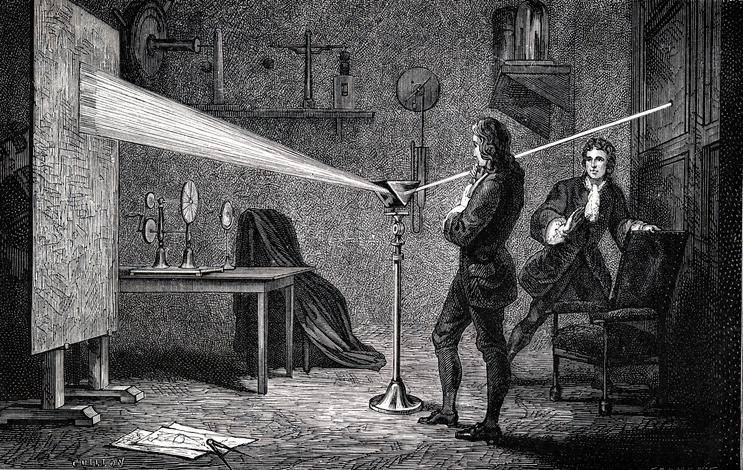Who Discovered Spectroscopy?

Similar to many scientific concepts, spectroscopy developed as a result of the cumulative work of many scientists over many decades. Generally, Sir Isaac Newton is credited with the discovery of spectroscopy, but his work wouldn't have been possible without the discoveries made by others before him. Newton's optics experiments, which were conducted from 1666 to 1672, were built on foundations created by Athanasius Kircher (1646), Jan Marek Marci (1648), Robert Boyle (1664), and Francesco Maria Grimaldi (1665). In his theoretical explanation, "Optics," Newton described prism experiments that split white light into colored components, which he named the "spectrum". Newton's prism experiments were pivotal in the discovery of spectroscopy, but the first spectrometer wasn't created until 1802 when William Hyde Wollaston improved upon Newton's model.
William Hyde Wollaston's spectrometer included a lens that focused the Sun's spectrum on a screen. He quickly noticed that the spectrum was missing sections of color. Even more troublesome, the gaps were inconsistent. Wollaston claimed these lines to be natural boundaries between the colors, but this hypothesis was later corrected by Joseph von Fraunhofer in 1815.
Joseph von Fraunhofer's experiments replaced Newton's prism with a diffraction grating to serve as the source of wavelength dispersion. Based on the theories of light interference developed by François Arago, Augustin-Jean Fresnel, and Thomas Young, Fraunhofer's experiments featured an improved spectral resolution and demonstrated the effect of light passing through a single rectangular slit, two slits, and multiple, closely spaced slits. Fraunhofer's experiments allowed him to quantify the dispersed wavelengths created by his diffraction grating. Today, the dark bands Fraunhofer observed and their specific wavelengths are still referred to as Fraunhofer lines, and he is sometimes referred to as the father of spectroscopy.
Throughout the mid 1800's, scientists began to make important connections between emission spectra and absorption and emission lines. Among these scientists were Swedish physicist Anders Jonas Ångström, George Stokes, David Atler, and William Thomson (Kelvin). In the 1860's, Bunsen and Kirchhoff discovered that Fraunhofer lines correspond to emission spectral lines observed in laboratory light sources. Using systematic observations and detailed spectral examinations, they became the first to establish links between chemical elements and their unique spectral patterns.
It took many decades and more than a dozen scientists for spectroscopy to be well understood, and most modern models weren't developed until the 1900's. Today, there are physicists, biologists, and chemists using spectroscopy in their day-to-day lives. For more information, visit our in-depth guide, What is Spectroscopy? or check out our other blog post, "What is the Difference Between Spectroscopy and Microscopy?"





